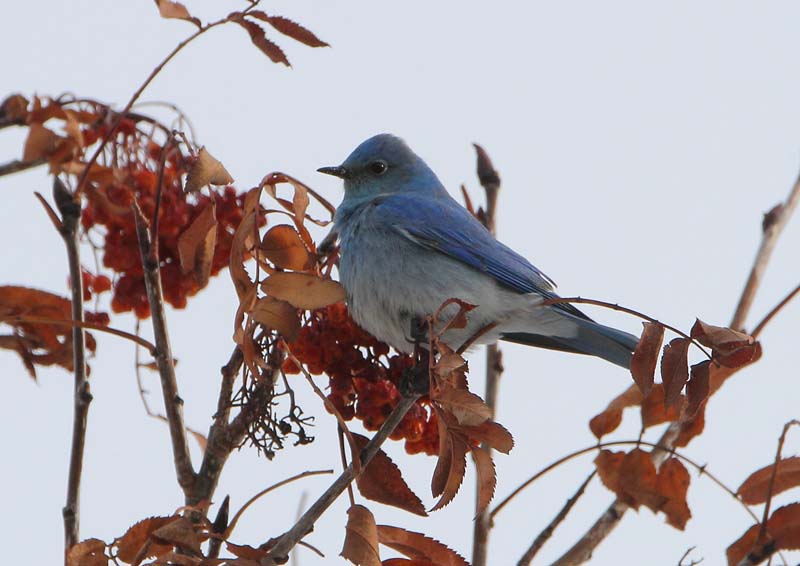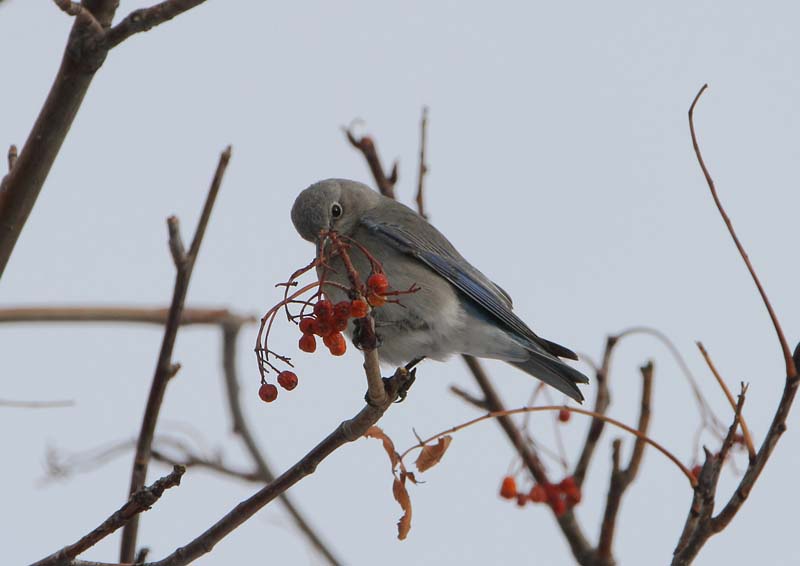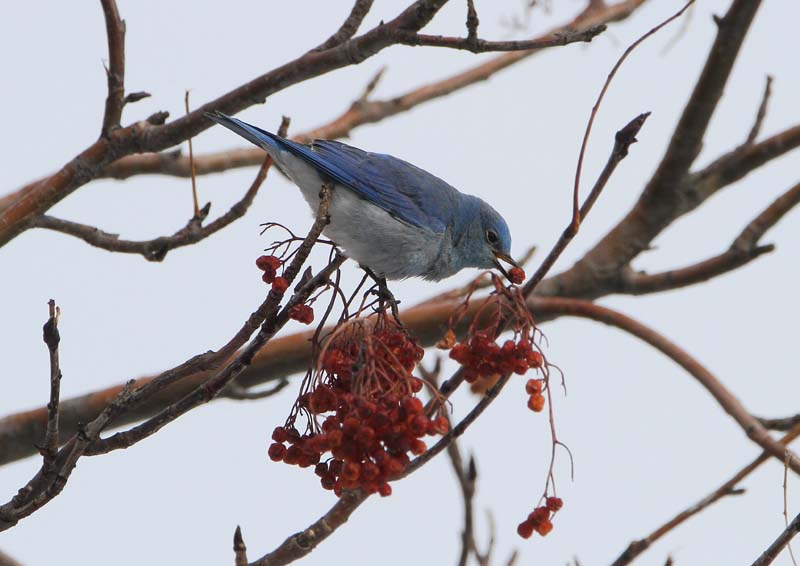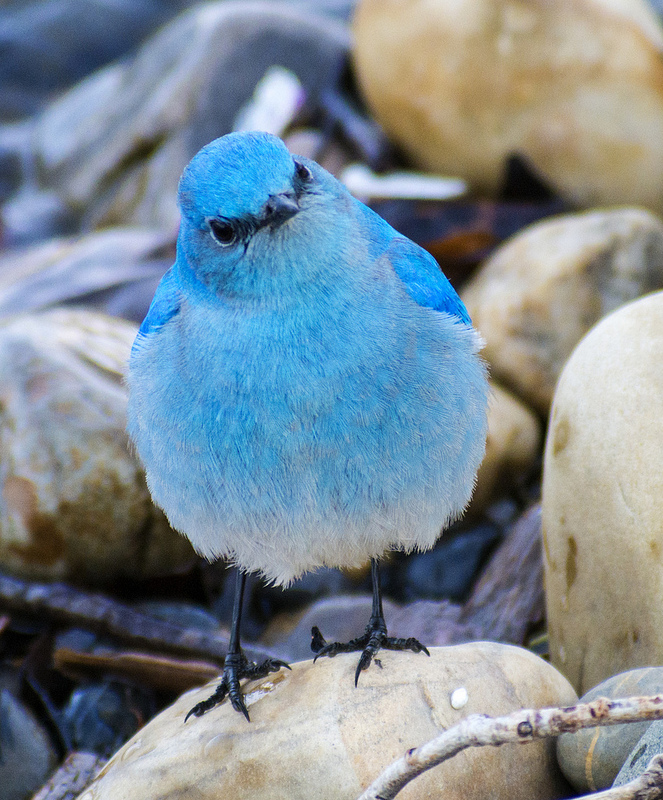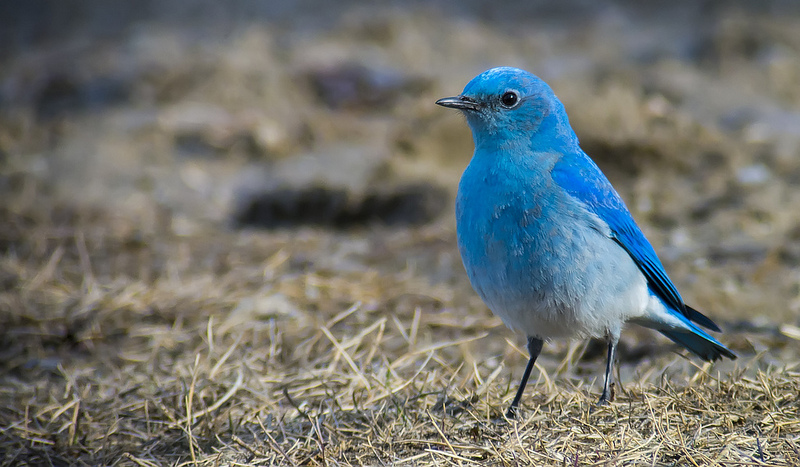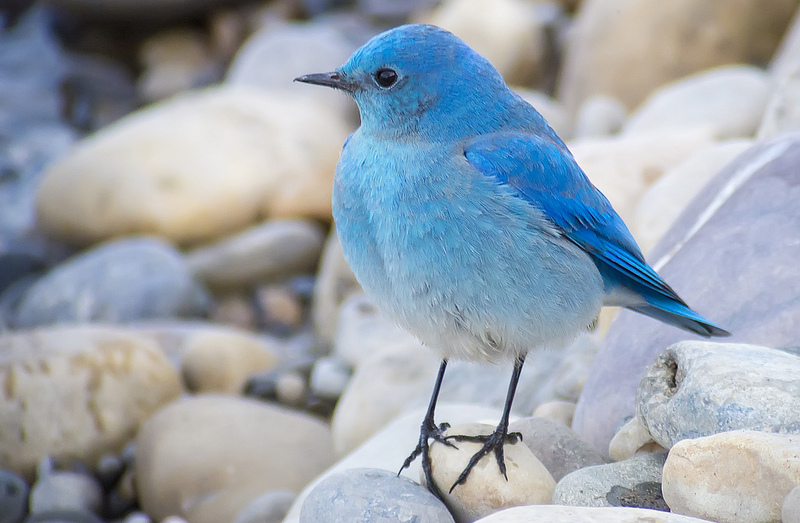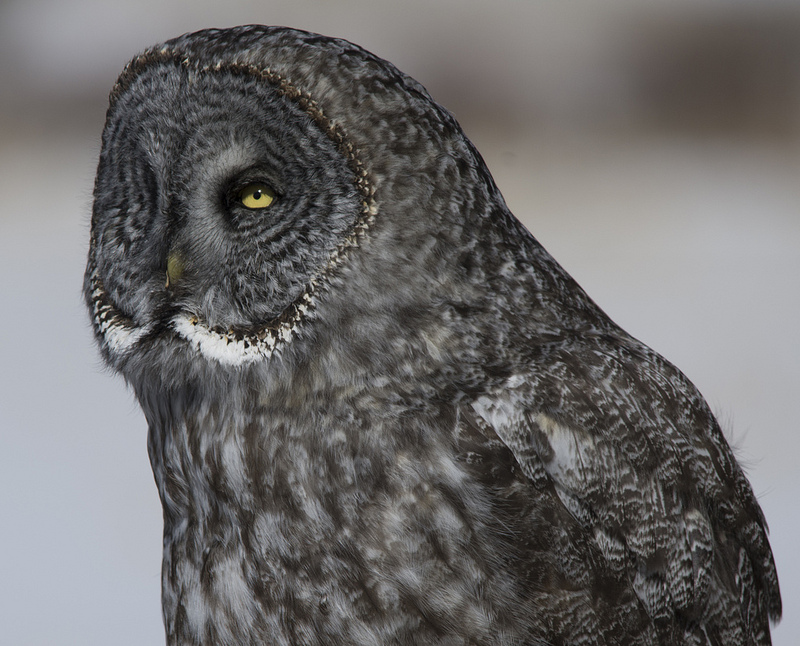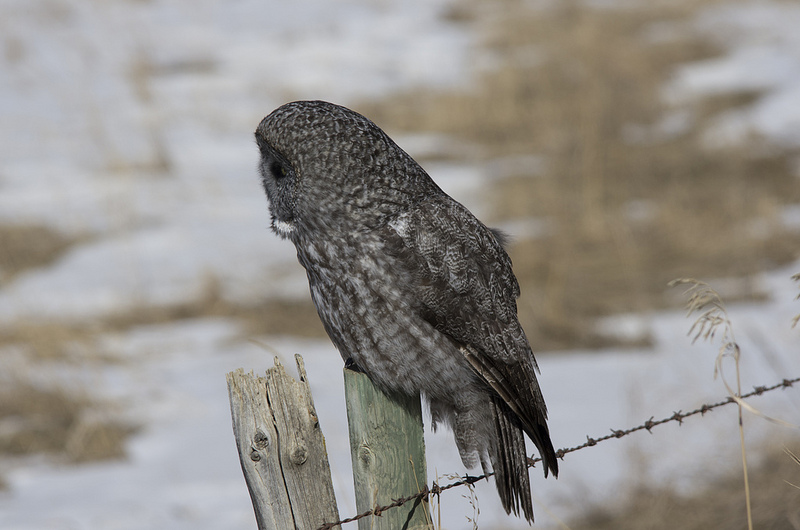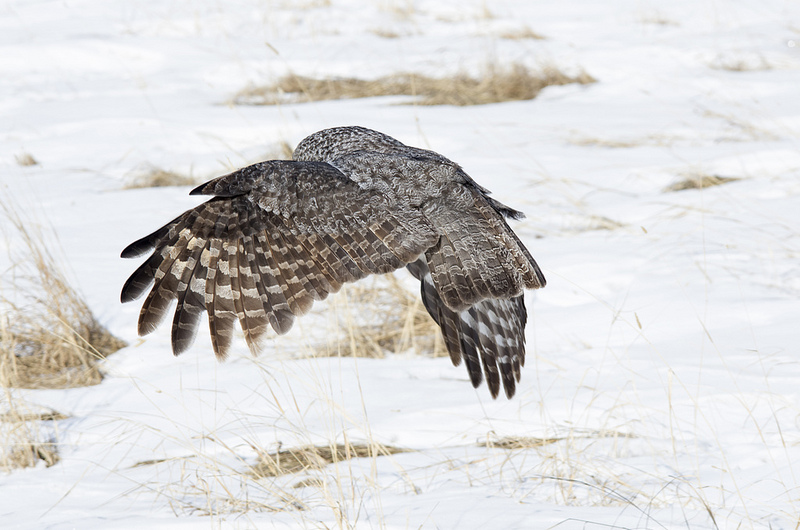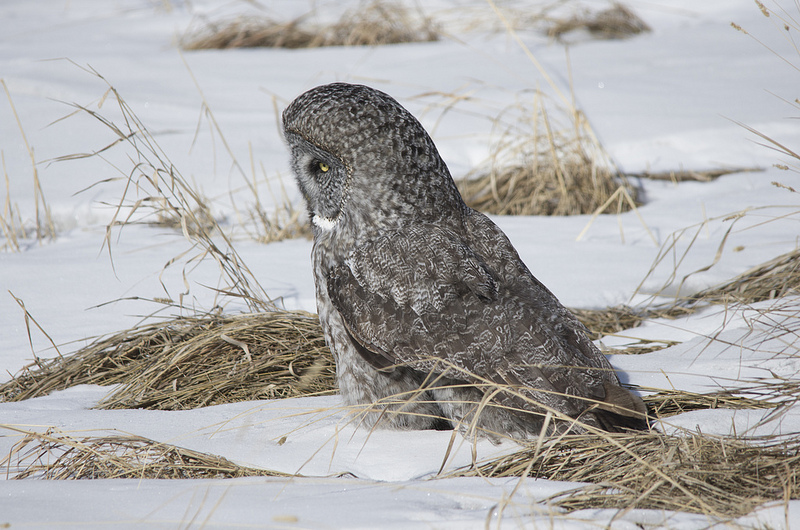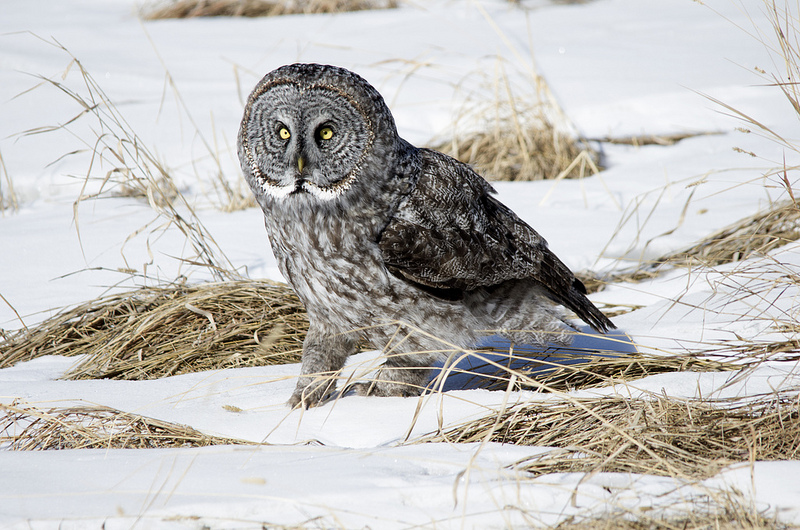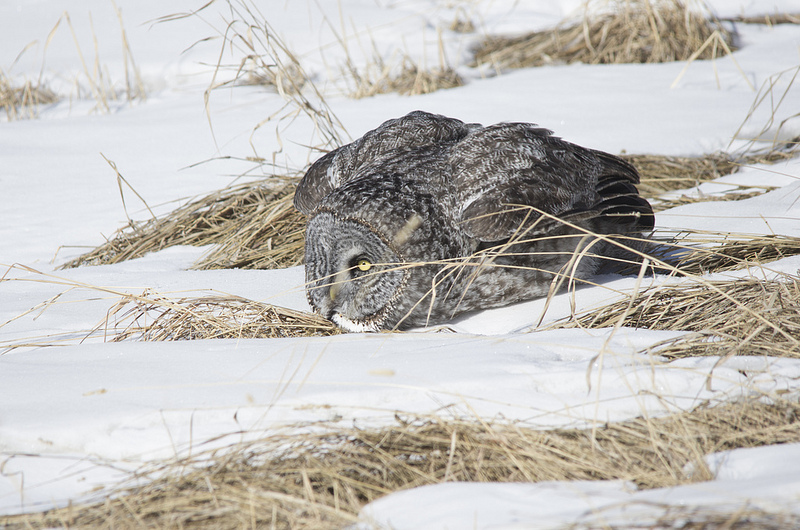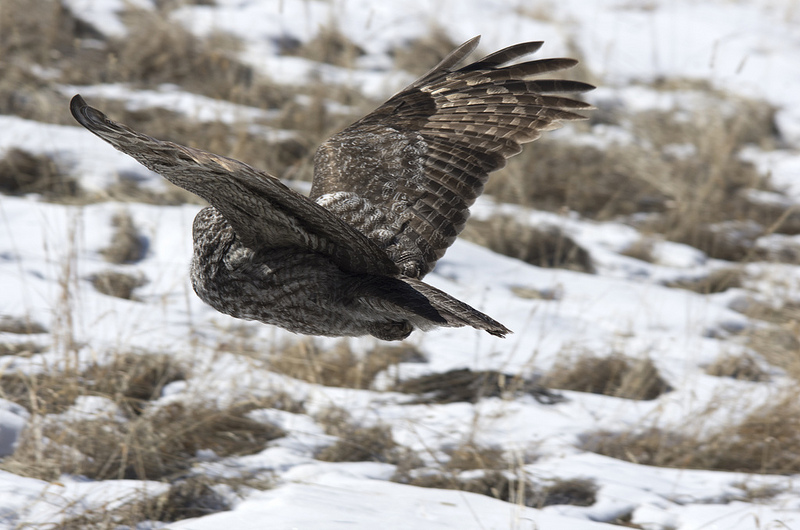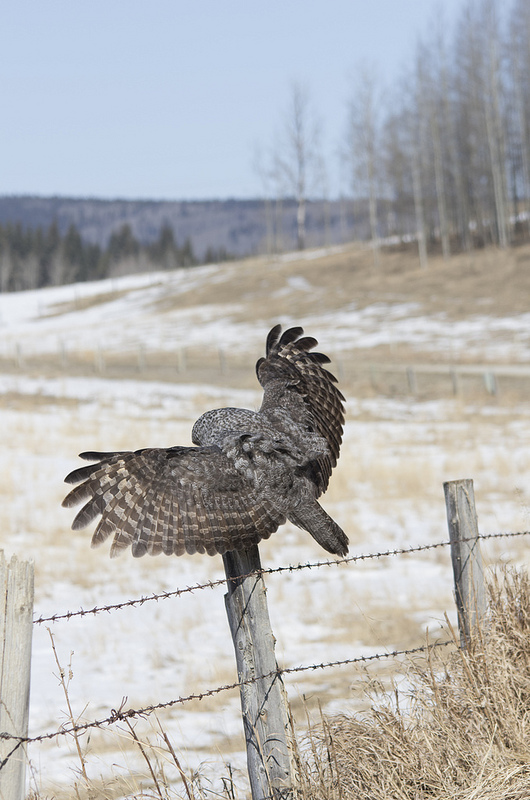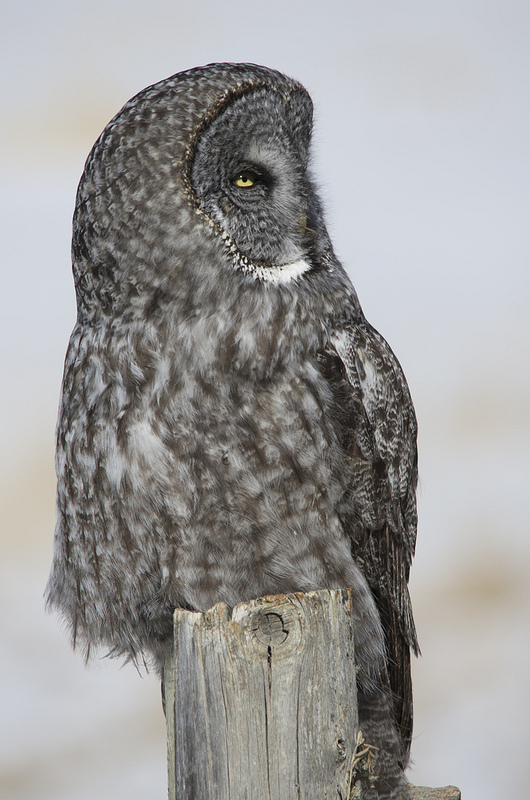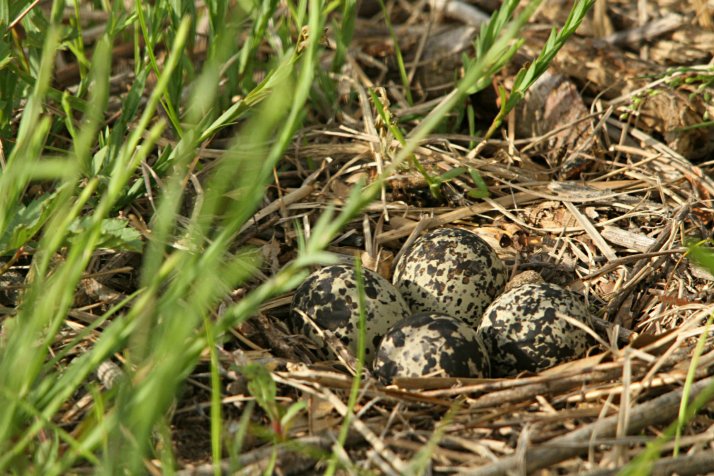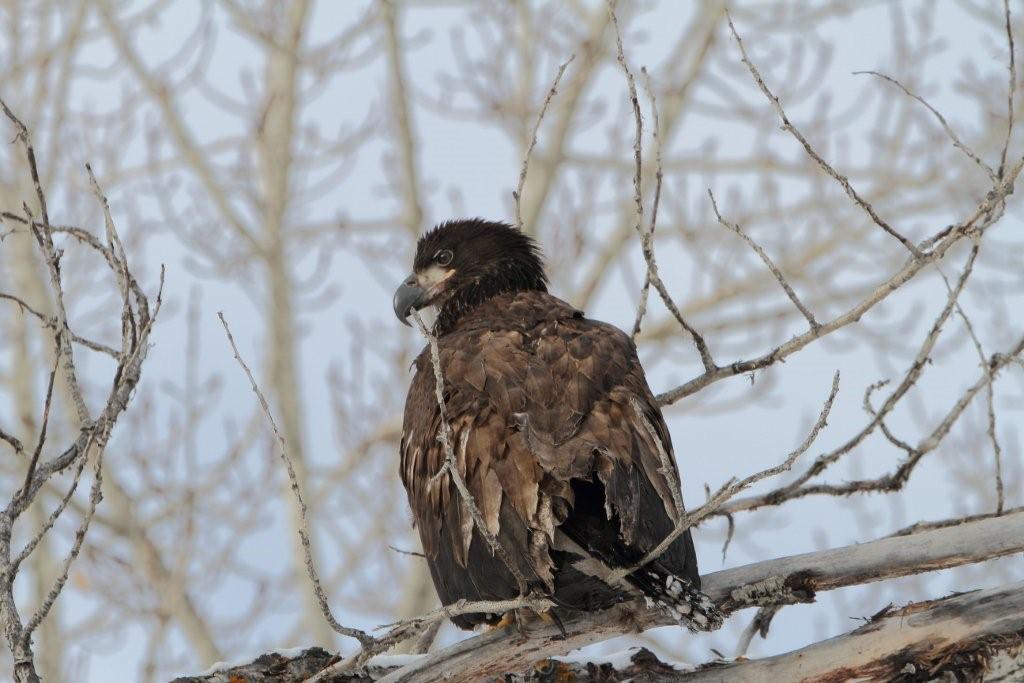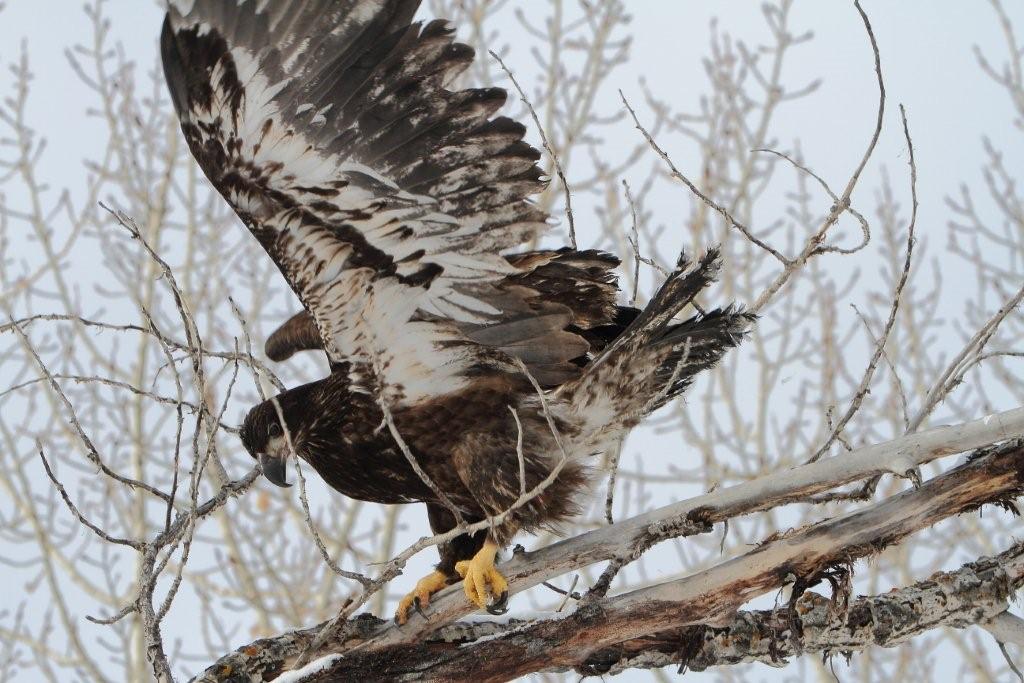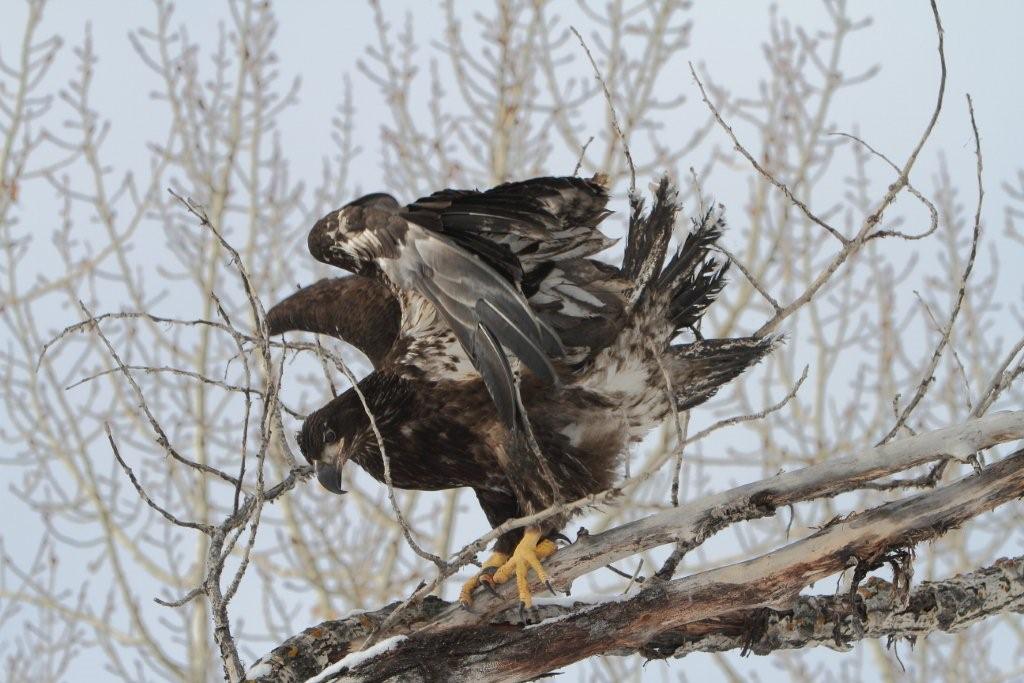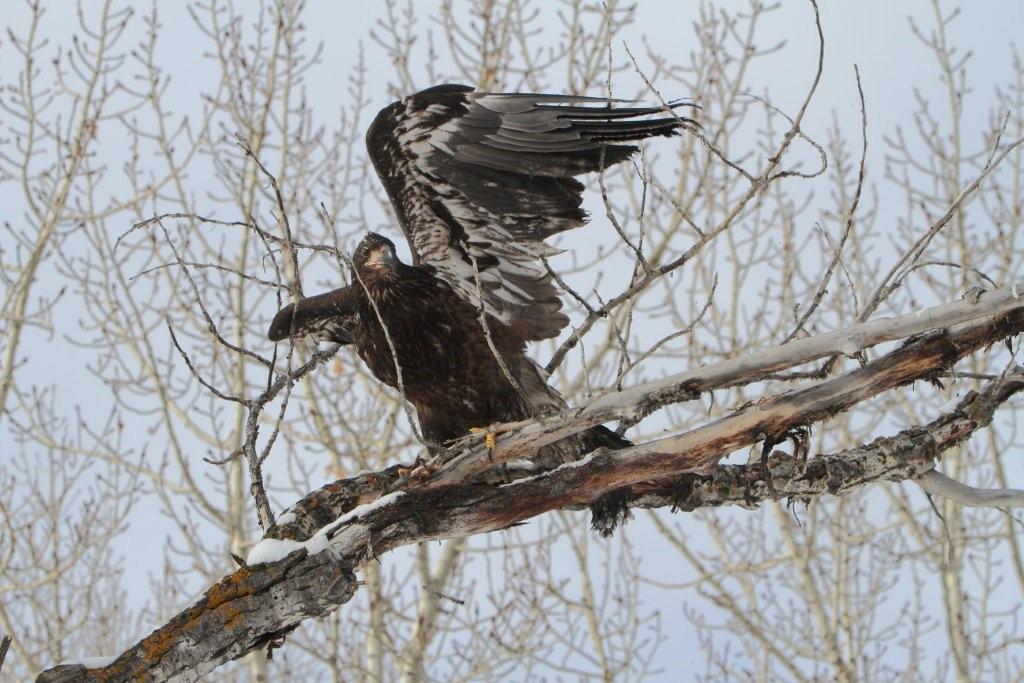Posted by Dan Arndt
As I mentioned in my last post, I’m going to be switching things up a bit for spring and fall, in regards to some of the content. I hope you like the new format, meant to highlight really the new arrivals (or long past due photos of said arrivals), rather than a laundry list of everything from Mallards and Chickadees to the uncommon or rare birds like Brown Thrasher and Sandhill Cranes. It shouldn’t look that different, but I do think it’s time I changed things up a bit. Given the feedback I’ve had in regards to the maps I’ve included for the past year, I’ll definitely be keeping those. It helps others who are going out in search of the birds days later, but also helps our attendees with a reminder of what we saw and where we saw it.
Sikome Lake is always a great place to visit any time of year. In winter, it’s a haven for the Black-capped Chickadee, both species of Nuthatch that are present here, and both the Hairy and Downy Woodpeckers. One of the birds that are a welcome sight are the Great Horned Owls, which I wrote about for Bird Canada over here. Today was no exception, providing us with quite a few new birds for the year, more than a few of which were surprises even to us!
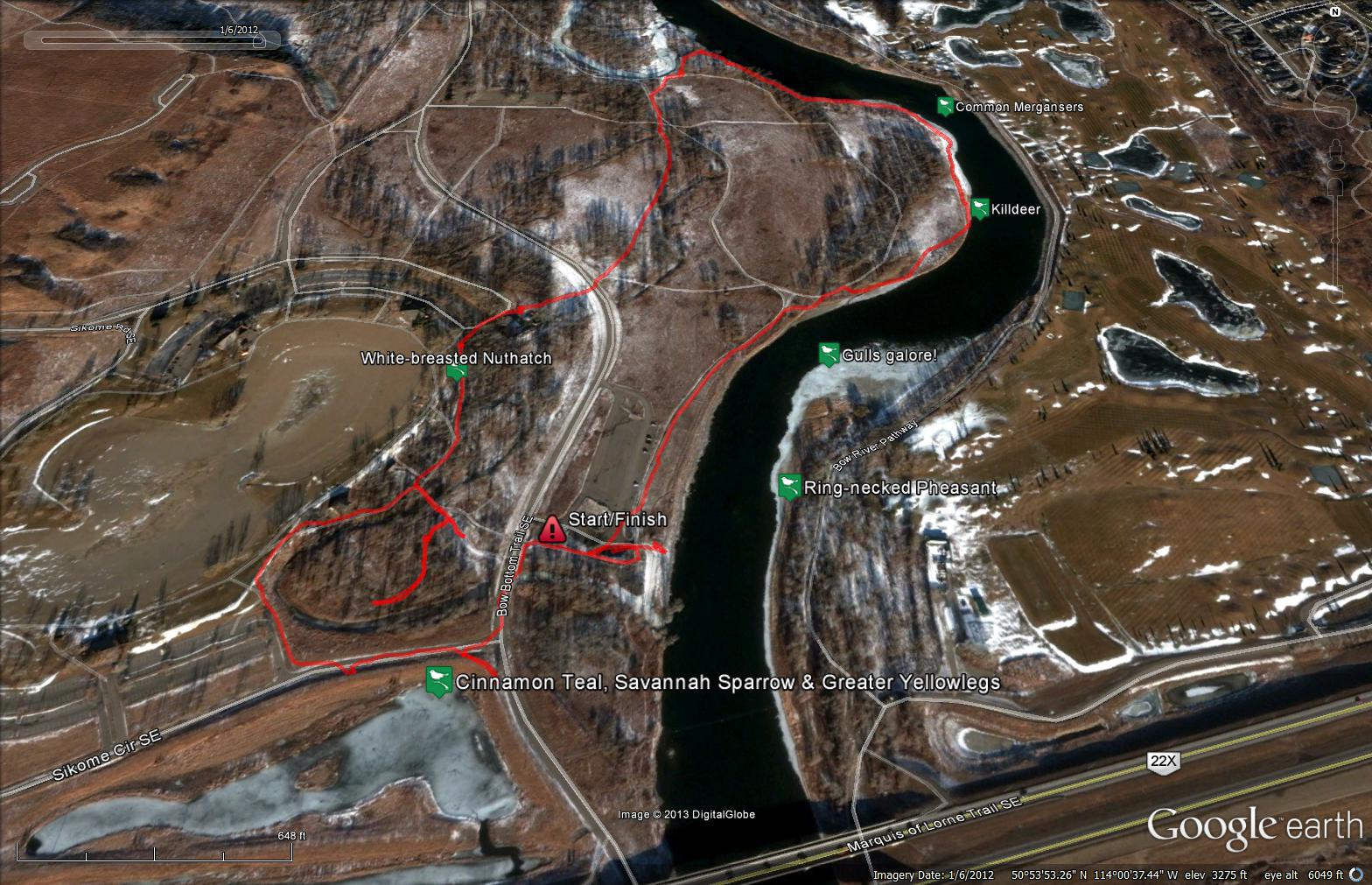
Sikome Lake, Hull’s Wood, and boat launch area
Our first new bird of the day was heard long before it was seen, and if there was a single bird one could say that was present all morning long, it would have been the Ring-necked Pheasant. Their calls echoed throughout the park from when we arrived at 8 AM, until I finally left at 1:15 PM. While they were heard all over the park, we only ended up spotting a single male sitting across the river from the boat launch when we arrived.
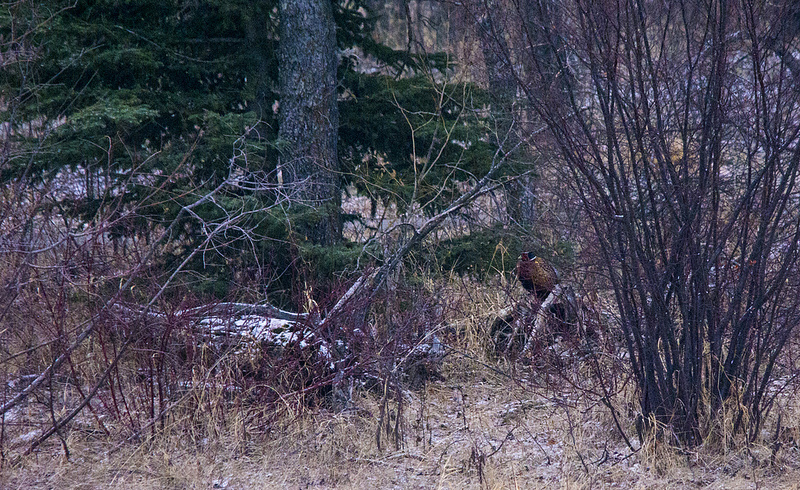
Ring-necked Pheasant
We surveyed a large flock of gulls one one of the gravel bars, picking out a Glaucous Gull amongst the various Ring-billed, California, and Herring Gulls, but the distance and the sleet simply would not allow for a photo.
Once we’d had our fill of gulls, we headed south to the large pond that borders Highway 22x, where we found this lone (and very early arriving) Cinnamon Teal, and were given nice comparison views of a Common and Barrow’s Goldeneye.

Cinnamon Teal and Canada Goose

Barrow’s Goldeneye (rear) and Common Goldeneye (front)
As we were leaving, I stopped for a moment as I heard a familiar, but quiet call of a Savannah Sparrow, though we couldn’t track down where the bird was calling from within the cattails on the bank of the pond.
We stopped for a few minutes to check out some Great Horned Owls on a nest, and both mom and dad were present and visible from our vantage point.

Female Great Horned Owl on nest
If you’ve ever birded Sikome Lake, you know that near the parking lot the Black-capped Chickadees, nuthatches, and woodpeckers simply will not allow you to pass without paying the toll of black-oil sunflower seeds, or other assorted nuts as your park tax. Today was the exact opposite. Only a handful of birds were even present, and this lone White-breasted Nuthatch sat quietly while those of us with cameras took photo after photo.

White-breasted Nuthatch
Emerging from the area surrounding the lake, we headed back for the bank of the Bow River to search for more. The male Common Mergansers were in full display, fighting for the right to mate with the few females on the river, who were outnumbered by at least five to one.

male Common Merganser
While the river in previous months had been packed with Canada Geese, Mallards, and Common Goldeneye, time time around it was a study in gull identification. Ring-billed, California, and Herring Gulls all circled and wheeled about, a few even taking a break on the near shore as we approached.
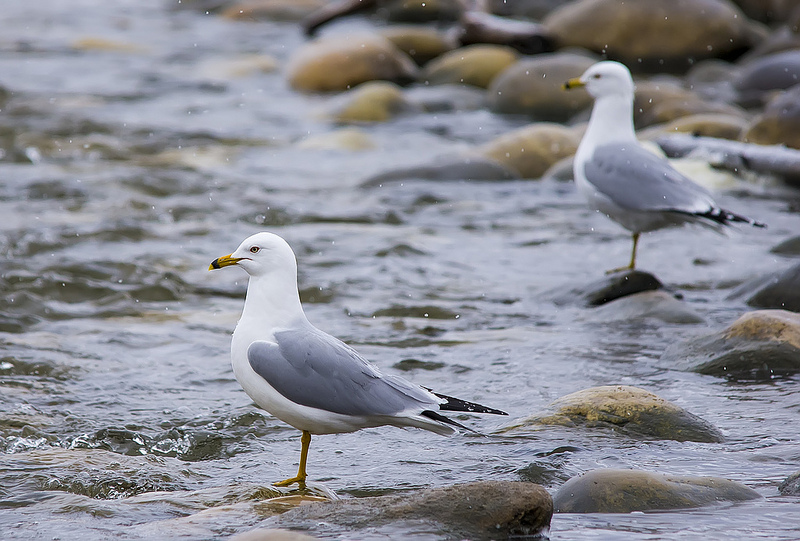
Ring-billed Gulls
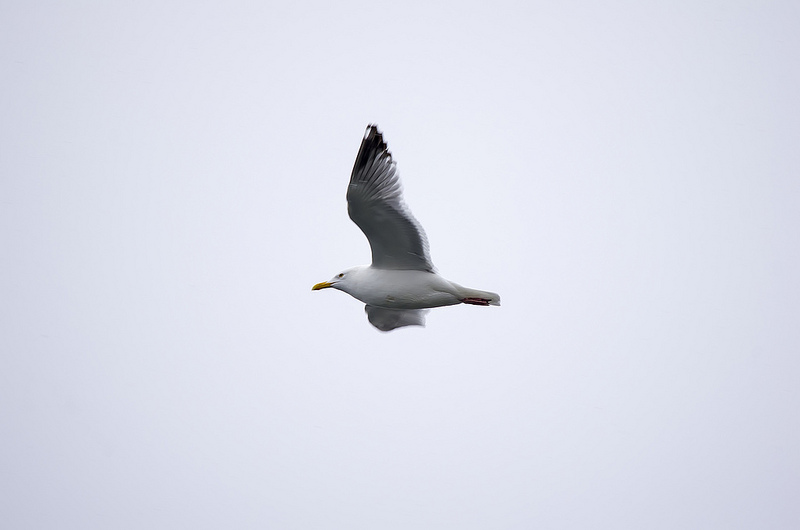
Herring Gull
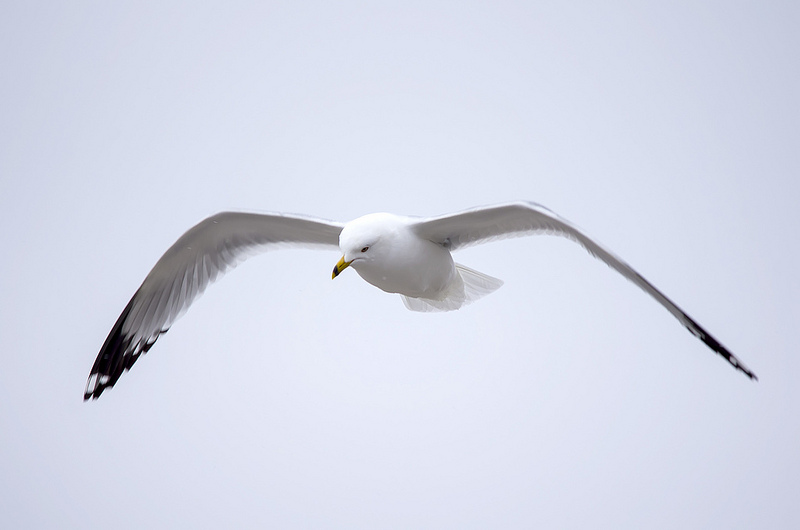
Ring-billed Gull
One surprise for us was a pair of Killdeer, possibly ones that had overwintered on this stretch of river, or possibly recent arrivals, either way they were nice to see, as they had eluded our group all throughout the winter course.
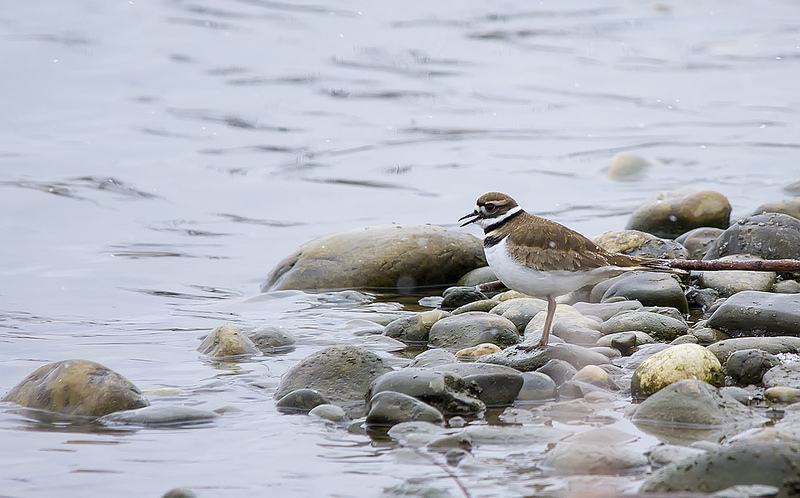
Killdeer
As we had nearly completed our walk and spent a moment chatting with Gus, his keen eyes and quick identification skills spotted this lone bird, our first bird of the year for any of the groups for this species. Can you tell what it is?
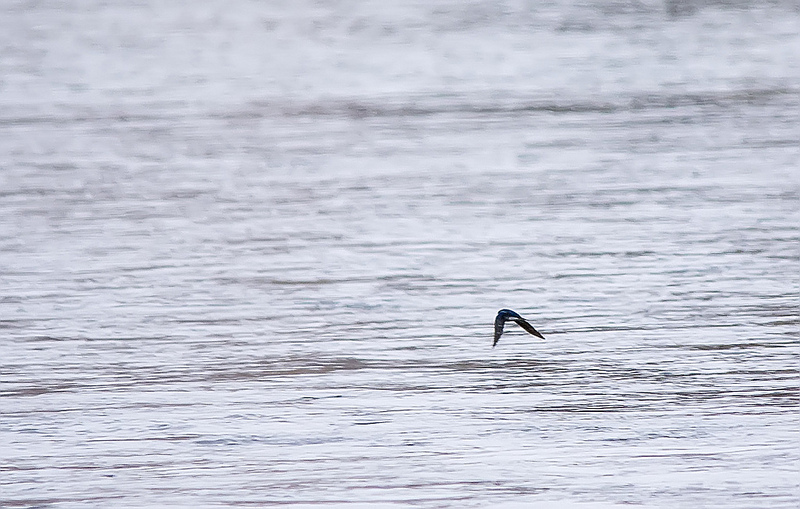
Mystery Bird
And with that, our group had a few great new sightings for the year, despite the terrible weather, constant snow and sleet, and uncomfortably cold winds. Of course, me being a sucker for punishment, I decided I needed a better shot of the Cinnamon Teal, so I headed back to the ponds. I didn’t get a better shot of that bird, but I did find this pair of Greater Yellowlegs in the area we saw him before, which was a really nice bonus bird for the day!
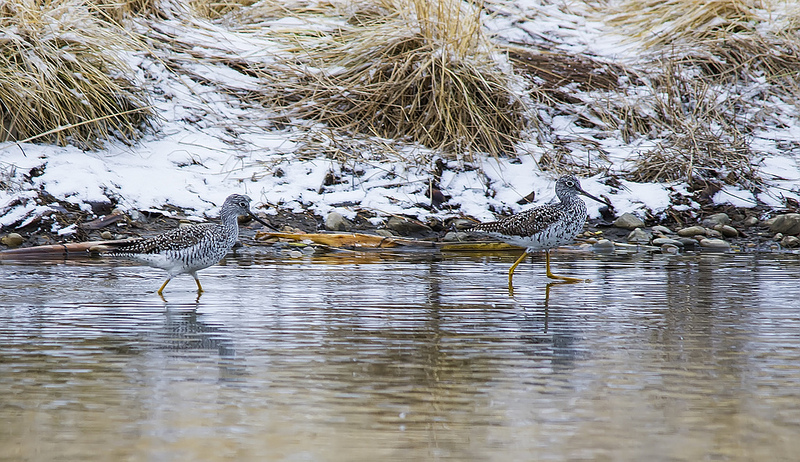
Greater Yellowlegs
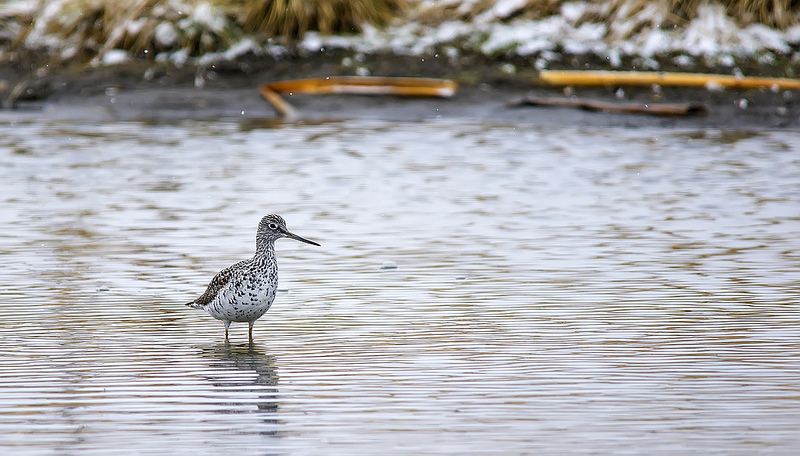
Greater Yellowlegs
And with that, I decided to call it a day and leave the park to the afternoon session, who were arriving just as I headed out.
Have a great week, and good birding!
